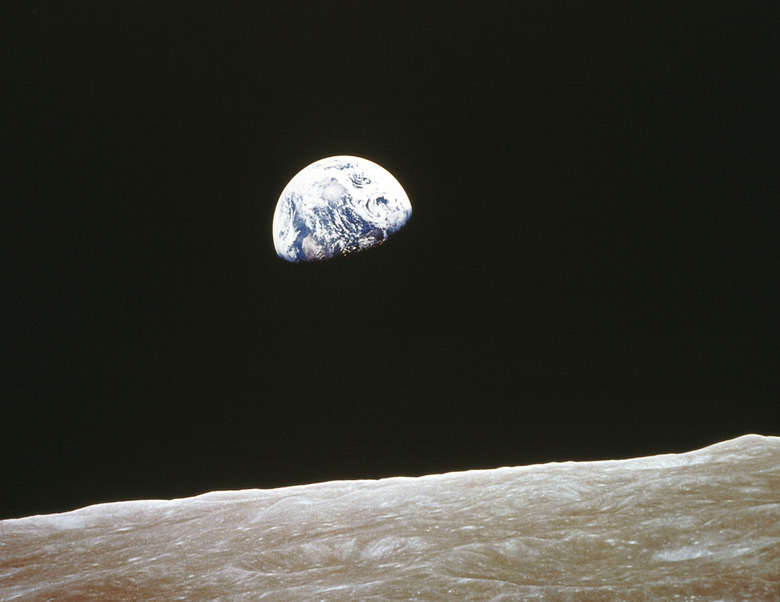What Is The Quickest Route To The Moon & How Long Will It Take?
The shortest distance between any two points is a straight line. That's just as true in space as it is on a piece of paper. So the quickest route to the moon is a straight line. But complications make the straight line approach not easy to achieve and also not the most attractive option. But the Luna 1 spacecraft did something like that in 1959 and took 34 hours to reach the moon.
No Straight Lines
No Straight Lines
The first problem with trying to travel a straight line in space is that it's very difficult to do. Every object experiences gravitational attraction from neighboring objects, and the end result is that objects in space travel along curves: ellipses, parabolas or hyperbolas. So Luna 1, for example, didn't travel on a straight line; it just traveled on an ellipse so large that it came close to looking like a straight line between the Earth and moon.
Other Options
Other Options
The most efficient route to the moon is an ellipse whose distance from the Earth is smallest at launch and largest at the moon — a transfer that takes about five days, as in the Apollo 11 mission. The more energy you are willing to spend, the closer you can make the path to a straight line and the shorter you can make the trip. But the more fuel you bring to space, the less mass you can have in your spacecraft, so it's unlikely anyone will try to beat the 34-hour record transfer time of Luna 1.
Cite This Article
MLA
Gaughan, Richard. "What Is The Quickest Route To The Moon & How Long Will It Take?" sciencing.com, https://www.sciencing.com/quickest-route-moon-long-take-14068/. 24 April 2017.
APA
Gaughan, Richard. (2017, April 24). What Is The Quickest Route To The Moon & How Long Will It Take?. sciencing.com. Retrieved from https://www.sciencing.com/quickest-route-moon-long-take-14068/
Chicago
Gaughan, Richard. What Is The Quickest Route To The Moon & How Long Will It Take? last modified March 24, 2022. https://www.sciencing.com/quickest-route-moon-long-take-14068/
